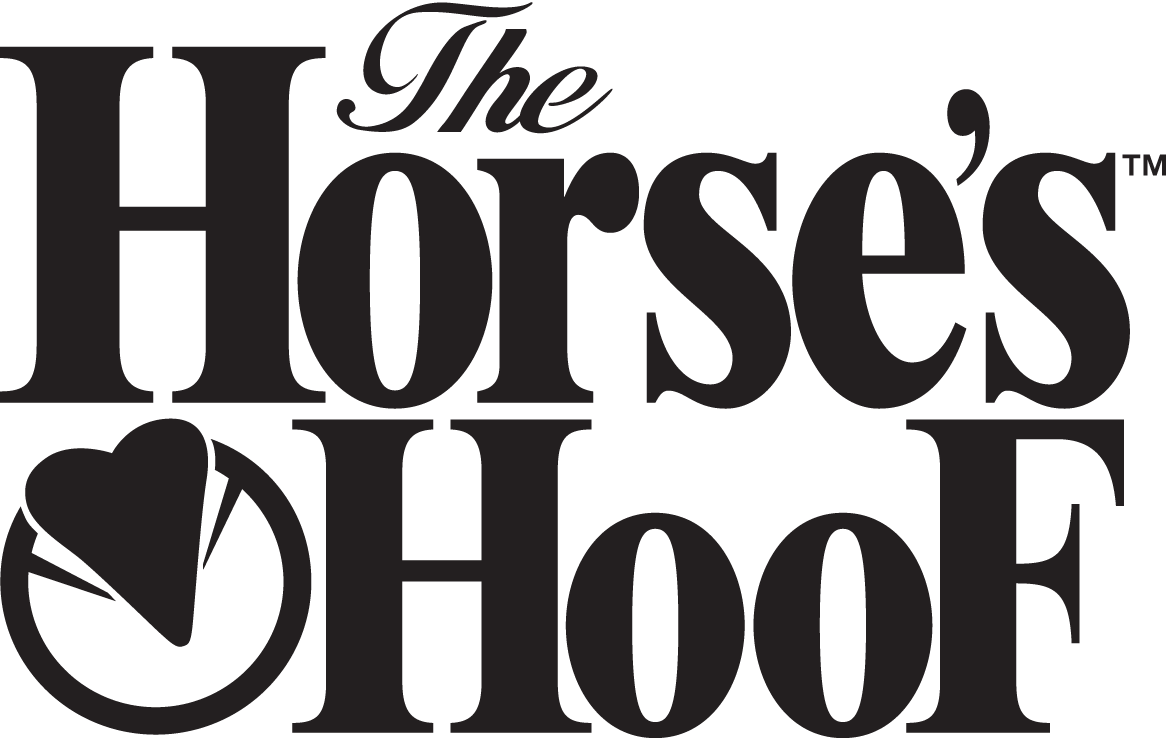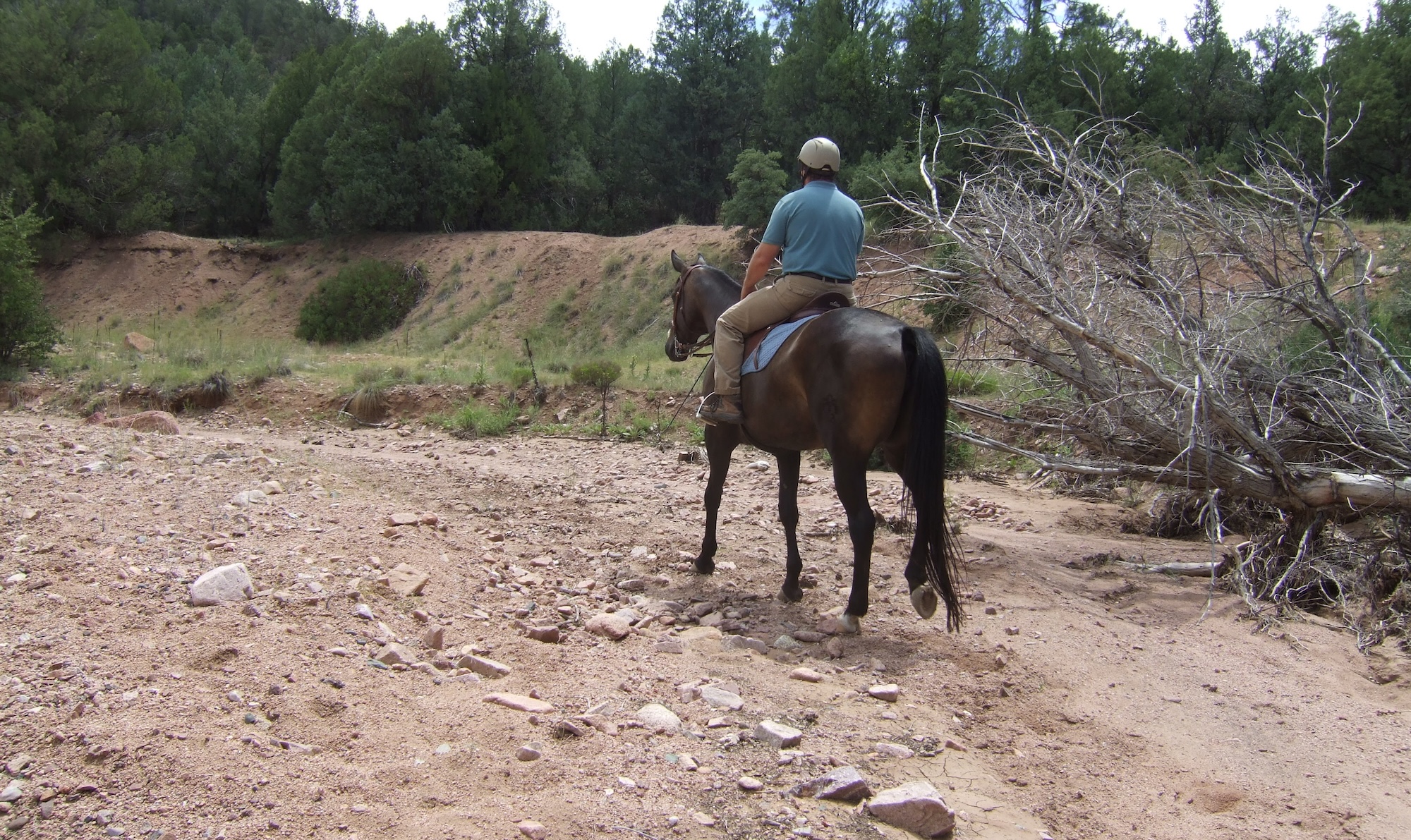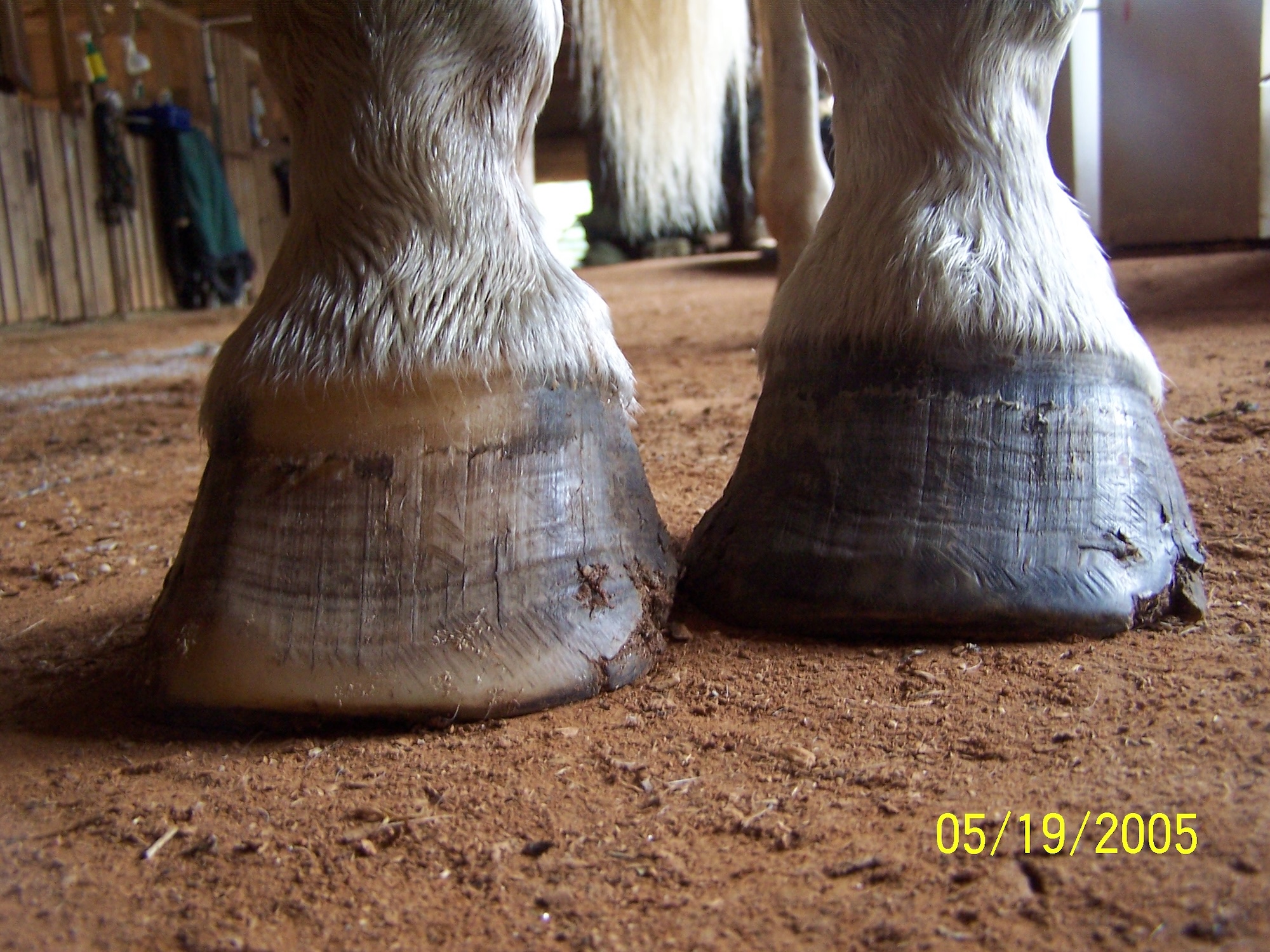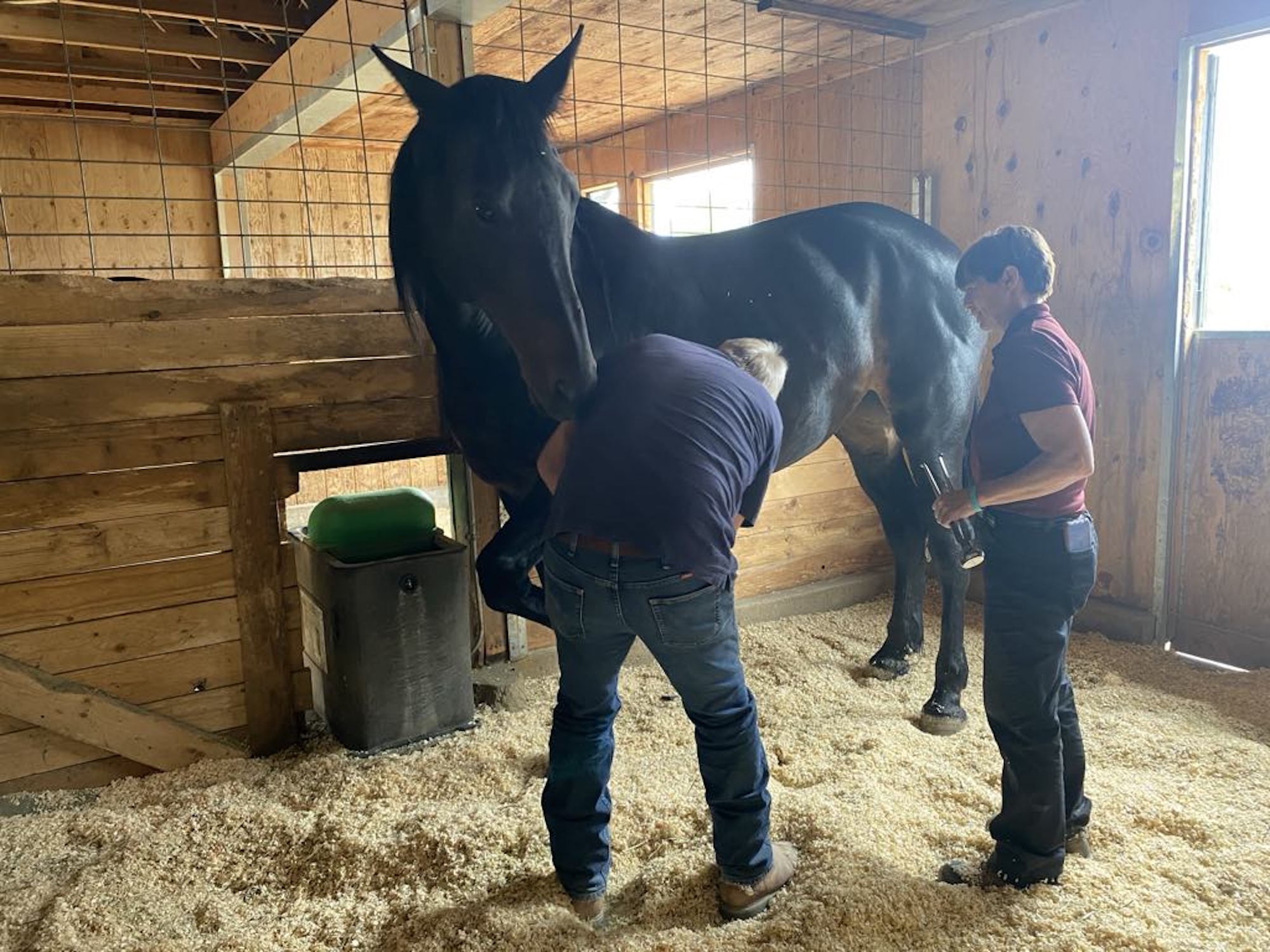Honestly, we’ve never cared for the phrase, “rock-crushing hooves,” because a major tenet of our paradigm is that the hoof is a warm, living, feeling part of the horse. In that perspective, the phrase seems somewhat contradictory! After all, so many shod hooves are indeed rock-crushing, and that has no correspondence whatsoever to the health and vitality of those same hooves. Dead, diseased hooves can certainly be rock-crushing and completely lack nerve function and sensation. So the question becomes, do we REALLY want rock-crushing hooves? Is that the goal?
Horses with healthy hooves that have optimal circulation and nerve function will use their hooves as sensory organs to “feel” the terrain. When a rock is sharp enough to potentially cause harm, this feedback system will allow the horse to unweight that foot momentarily, therefore protecting it from a potential stone bruise or other physical damage. We’ve seen many videos of wild horses picking their way across rugged, unforgiving rocky terrain, and if they are in a calm situation, they will try to avoid the worst rocks, and even wince if they step on a really bad one. Nature protects them. Of course, if their adrenaline is high, they will tune out all the rocks—and rock-crush right over them. Better to have a bruise later, than be someone’s dinner tonight!
That said, horses with healthy hooves can tolerate quite rugged surfaces. There are two aspects to this: first is that the hoof must be wide and uncontracted, so that a rock does not pinch on the soft tissues that are out of position in most every contracted hoof. Second is that hooves do acclimate to the terrain, so more exposure to firm ground and rocks will allow for a horse to tolerate more rugged ground, in general.
In addition, there are certain types of hooves that are better suited to rocky ground; this includes the more hard terrain hooves (Arab, Quarter Horse, Morgan) but ONLY when those hooves are uncontracted. The wide open hooves of Warmbloods and drafts often benefit from lack of contraction, but they tend to tolerate sharp rocks a bit less because of their shape. This makes mechanical sense; a healthy uncontracted hoof with upright conformation will have great concavity in ratio to its overall surface area than will a similar hoof with the wide, flat conformation of soft terrain breeds.
If your horse is very contracted, please don’t expect comfort on sharp rocks in the near future. Making that your immediate goal could interfere with your progress towards hoof health. Every horse is different, so you’ll have to experiment, but we honestly advise AGAINST trying to “condition” or acclimate contracted hooves to very rocky ground. This can be harmful, and damage can even occur. It makes more sense to use hoof boots when riding on very rocky ground, or just ride on terrain more suitable to your horse, for the time being.
For horses with very healthy hooves, crossing rocks comfortably, with or without conditioning, can be a litmus test that your trimming and hoof care are on the correct path. If your horse is not really contracted, or just mildly so, you can experiment with conditioning on rocks, but be sure to just use common sense.
We’re always happy when our horses don’t have any problems crossing rugged, rocky surfaces! Our own horse as pictured here is NOT acclimated to terrain this rugged, and she rarely encounters it. She is conditioned to some rocks and to hard, firm ground. She also benefits from having uncontracted hooves and a wide open hoof form. She had no problems crossing these surfaces (hoof photo immediately following a weekend of rocky riding – and in need of a trim at less than 3 weeks since her previous trim!). At the time these photos were taken, we had not even applied a hoof boot to her feet in many years – but we do not hesitate to use hoof boots whenever needed.


by James and Yvonne Welz, published 2013 Hoof Help Online
See the full content listing of all issues of The Horse’s Hoof Magazine! We also provide instructions on how to read the issues for free on Hoof Help Online.
For a detailed listing of all articles on The Horse’s Hoof website, please visit our Article Directory.




